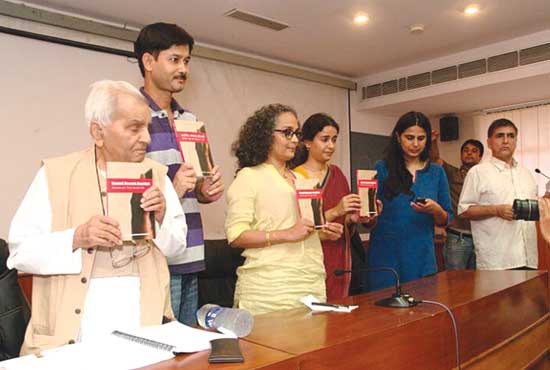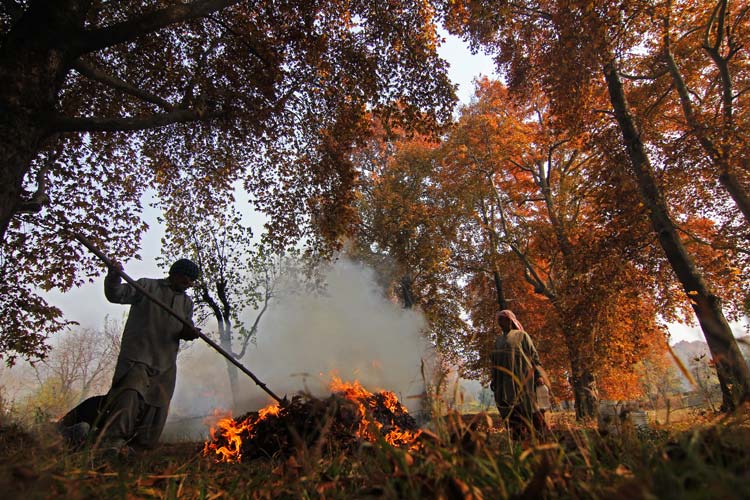For all these years, students, businessmen and travellers from Kashmir were routinely arrested in Delhi and elsewhere, shown on TV, given a bad name and consigned to Tihar. After mutely witnessing it for decades, a civil society group has used court verdicts to tell the larger story of how infamy works, reports JEHANGIR ALI.

At the outset, it looks like the Special Cell of Delhi police was at war with the citizens which it was supposed to protect. In a report ‘Framed, Damned, Acquitted: Dossiers of a Very Special Cell’ which was released by the Jamia Teachers Solidarity Association (JTSA) in New Delhi last week, there is a chilling pattern of framing innocent Muslims, majority of them from Kashmir, manufacturing evidence, inventing witnesses and using media to ‘prove’ them guilty, which subsequently failed to stand the judicial scrutiny.
Although the findings of the report are an open secret but it is for the first time that a civil society group have raised serious questions over the efficacy and credibility of an investigating agency which is at the forefront of anti-terror operations in the capital of India. Indeed, with a sordid 30 percent conviction rate in the cases registered by the Special Cell, as has been revealed by an RTI query, the charges of framing innocent Muslims to malign the community gain more credibility.
The JTSA report examines the course of 16 cases registered by the Special Cell over the last two decades (from registration of FIRs to the subsequent acquittals in courts) and found those accused of being operatives and agents of various terrorist organizations like al-Badr, HUJI and Lashkar-e-Toiba, and scandalously charged for sedition, waging war against the state, planning and causing bomb blasts, training terrorists, collecting arms, ammunition and explosives and receiving funds for terrorist activities, were in fact, innocent people.
The 200 page report has drawn primarily from the court judgments and the media reports of the arrests and the trial that followed, and it clearly shows that the acquittals of the accused were not simply for the want of evidence but for the manner in which the evidence provided by the Special Cell was tampered and fabricated, eyewitnesses influenced and sometimes manufactured, basically how poorly the prosecution failed to prove their cases. In the 16 cases mentioned in the JTSA report, a large majority is made up of Kashmiris, who were in various parts of India as students or as businessmen, and were picked up by the sleuths of the special cell and framed in heinous cases as terrorism, sometimes with the help of J&K police, which needs to be investigated. The JTSA was formed in 2008 after the Batla House encounter. Initially, the group was focussed on extrajudicial killings but later expanded its activities to illegal detentions and media trials by police and other investigating agencies in India. Kashmir Life revisits the tragedy of the innocent Kashmiris who became casualties in the murky wars of espionage and terrorism.
Inventing Charges and Evidence
On July 2, 2005, the Special Staff claimed to have spotted a blue Tata Indica coming towards Delhi in Dhaula Kuan in what was to become famously known as Dhaula Kuan fake encounter. It claimed that the car was chased, gunfire was exchanged, grenades were hurled and finally the ‘terrorists’ were apprehended. The investigating officer of the case, Ravinder Tyagi, a notorious law enforcement officer who was described by the court as the author of the fake encounter, had claimed that a major terrorist attack was averted with the arrest of six Kashmiris, one of them identified as Moinuddin Dar.
The theory, however, crumbled under the pressure of its own lies in the court and it took nearly six years for Dar to walk out of jail, untarnished, but devastated by years of incarceration and torture. It was later revealed that Dar was actually picked up from his hotel in Karol Bagh by Tyagi and his men. But the manner in which the Delhi police ‘invented’ evidence is revealing.
The raiding party had claimed to have recovered an army combatant uniform from the ‘terrorists’ and traced its tailor to Gopinath Bazar in Delhi Cantt. “The tailor, when produced in the —















